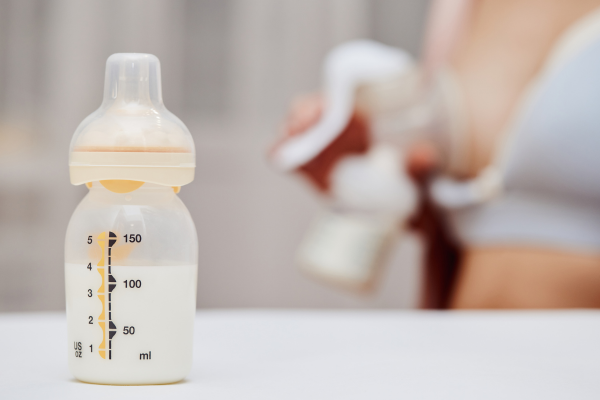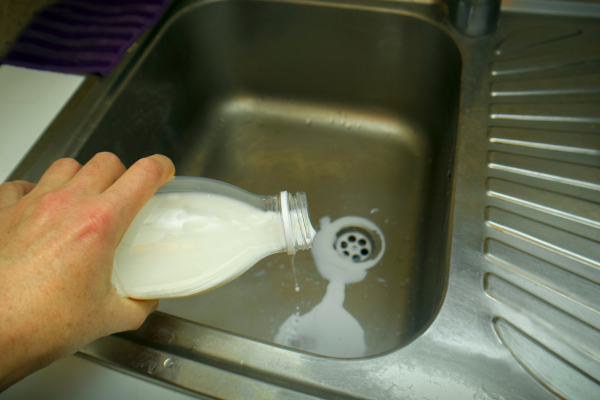Can Warmed Breast Milk Be Refrigerated Again?

Breast milk is a priceless gift from mother nature, providing optimal nutrition and immune-boosting benefits for our babies.
As busy moms, we understand the importance of efficiency and avoiding waste.
That’s why it’s crucial to know the dos and don’ts when it comes to storing and handling our liquid gold.
Imagine this scenario: You’ve carefully expressed your precious breast milk, stored it in the refrigerator, and when your little one gets hungry, you warm it up for a cozy feeding session.
But this time your baby doesn’t finish the entire bottle, leaving you with leftover warmed breast milk.
Can you simply put it back in the refrigerator for later? Well, the answer isn’t as straightforward as we might hope.
In this article, we will explore the ideal time frame for refrigerating warmed breast milk, proper storage techniques, the importance of temperature control, and why it’s advisable to avoid reheating and cooling milk multiple times.
Understanding these key aspects will help us to provide our little ones with safe, nourishing breast milk while minimizing any potential risks.
Guidelines To Store Breastmilk
When it comes to storing breast milk, the location and temperature play a crucial role in maintaining its freshness and safety for your little one.
Here’s a breakdown of the recommended storage times and temperatures for different types of breast milk:
Freshly Expressed Or Pumped Milk
You can leave freshly expressed or pumped breast milk at 77°F (25°C) or colder for up to 4 hours at room temperature.
To extend the storage time, place the milk in the refrigerator at 40°F (4°C). It can be safely stored for up to 4 days.
For longer-term storage, freezing is ideal. Ensure the freezer temperature is 0°F (-18°C) or colder.
Breast milk can be stored in the freezer for up to 1 year, but using it within the first 6 months is recommended.
Thawed, Previously Frozen Milk
Thawed breast milk should not be left at room temperature for more than 1-2 hours.
It is best to use it within this time frame.
If you thawed the milk in the refrigerator, it can be stored for up to 24 hours (1 day).
It is important to note that once thawed, you should never refreeze human milk.
Leftovers From A Feeding
It is advised to use the leftover breast milk within 2 hours after your baby finishes feeding.
If there is still milk left in the bottle after this time, it is recommended to discard it for safety reasons.
Can You Refrigerate The Warmed Breastmilk?
As mentioned above, warmed breast milk should ideally be used within 2 hours if left at room temperature.
If there is still warm milk left in the bottle after feeding, you can refrigerate it for later use.
It’s important to note that re-refrigerated breast milk should be used within 24 hours to ensure its freshness and quality.
Things To Note
- Do Not Refrigerate warmed breastmilk after 2 hours.
- Do Not Freeze the milk.
- Do Not Reheat it again.
Why Is It Important To Discard Breastmilk After 24 Hours?

Discarding once-warmed breast milk after 24 hours is recommended for several reasons related to safety and maintaining the quality of the milk.
Bacterial Growth
Breast milk is a natural substance that contains nutrients and immune-boosting properties.
However, it also provides an ideal environment for bacterial growth.
Even though refrigeration slows down bacterial growth, it does not completely stop it.
Over time, bacteria can multiply and potentially contaminate the milk, increasing the risk of illness if consumed by the baby.
Nutrient Degradation
Breast milk is a complex fluid that contains various nutrients that are essential for a baby’s growth and development.
Over time, certain nutrients in breast milk can break down, resulting in a reduction in their nutritional value.
Using the milk within 24 hours helps ensure that your baby receives the maximum nutritional benefits from the breast milk.
Quality Concerns
As breast milk sits in the refrigerator, it may develop off-flavors or odors due to the breakdown of fats and other components.
These changes in taste and smell can make the milk unappealing to the baby, leading to potential feeding difficulties.
Using the milk within 24 hours helps maintain its freshness and palatability for the baby.
How To Store Breastmilk Properly?
Cleanliness
Always wash your hands thoroughly with soap and water before expressing or handling breast milk.
Clean all pumping equipment, bottles, and storage containers with hot, soapy water, or use a dishwasher.
You can also use a breastmilk container cleaner.
Storage Guidelines
Choose containers that are specifically designed for storing breast milk, such as BPA-free bottles, breast milk storage bags, or glass containers with airtight lids.
Ensure they are clean and sterilized before use.
Avoid storing breast milk in the refrigerator door as it experiences temperature fluctuations when the door is opened and closed.
If you plan to freeze breast milk, leave some space at the top of the container as it expands during freezing.
Portion Sizes
Store breast milk in smaller portions (2-4 ounces or 60-120 milliliters) to minimize wastage.
This allows you to thaw only the amount needed for each feeding.
Label And Date
Always label each container with the date when the milk was expressed.
If you have multiple containers, it helps to use the oldest milk first.
Thawing And Warming
When ready to use the stored breast milk, thaw it by placing the container in the refrigerator overnight or by holding it under warm running water.
Avoid using a microwave to thaw or warm breast milk, as it can create hot spots and destroy some of its beneficial properties.
Avoid heating breastmilk directly on a stove.
Gently swirl the container to mix any separated fat layers.
Safety Precautions
If breast milk has an off smell, or unusual color, or shows signs of spoilage, discard it.
Do not refreeze thawed breast milk, and avoid shaking it vigorously as it can break down the milk’s nutritional components.
Conclusion
Proper storage of breast milk is essential for maintaining its quality and ensuring the safety and well-being of our precious little ones.
By following the guidelines mentioned above, we can maximize the nutritional value of breast milk while minimizing the risk of bacterial contamination.
Each step plays a crucial role in preserving the integrity of this invaluable resource.
Remember, breast milk is a labor of love, and by storing it properly, we can provide our babies with the best nourishment possible.





